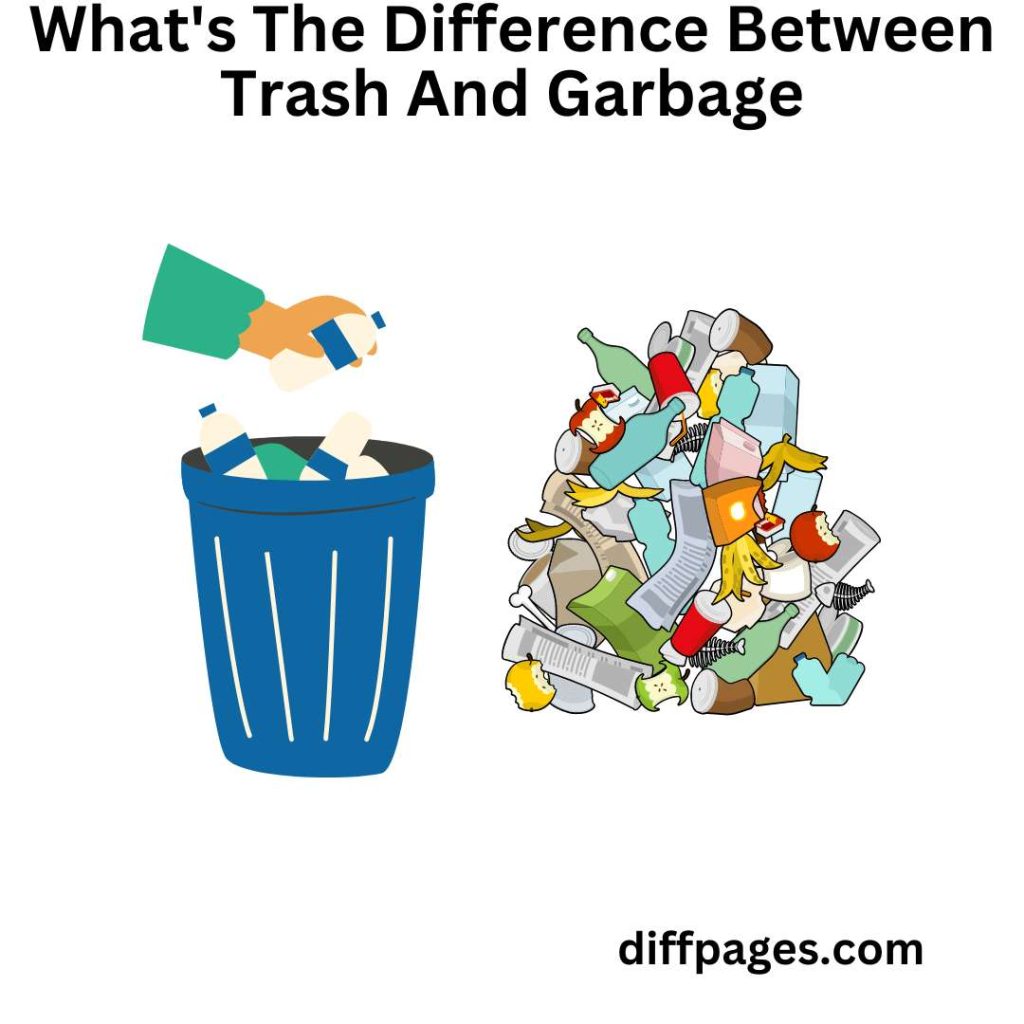In our day-to-day lives, we generate a substantial amount of waste, often referred to as trash or garbage. While these terms are frequently used interchangeably, they have distinct meanings within the context of waste management. The differentiation between trash and garbage is more than just semantics; it also relates to the materials involved, their source, and how they’re managed and disposed of. This understanding is essential for improving waste management practices and ensuring environmental sustainability.
What is Trash and What is Garbage?
Trash and garbage, although commonly used interchangeably in everyday language, technically refer to different types of waste. These terms are part of the wider lexicon related to waste management, which includes other terms like refuse, rubbish, and waste. Understanding the distinction between these terms contributes to better waste management practices and environmental sustainability.
Trash refers to dry waste materials. These can be items that are discarded because they are broken, useless, or no longer needed. Typical examples of trash include paper, cardboard, plastic wrappers, clothes, and dry organic matter like leaves and grass clippings. Many items classified as trash can often be recycled, making it a significant focus of waste management efforts.
Garbage, on the other hand, refers to wet waste or biodegradable waste. This often includes waste produced in the kitchen, such as food scraps, peels, and any other leftover organic material from food preparation or after meals. Garbage often needs to be handled differently than trash, as it can decompose and create unpleasant odors or attract pests.
Key Differences Between Trash and Garbage
- Type of Waste: Trash typically refers to dry, non-biodegradable waste, while garbage refers to wet, biodegradable waste.
- Source of Production: Trash is often produced from everyday activities such as office work, packaging, and outdoor maintenance. Garbage, however, predominantly originates from kitchen and food-related activities.
- Potential for Recycling: Trash, being mostly dry and often consisting of materials like paper, plastic, and metal, has a higher potential for recycling. Garbage, being mostly organic waste, is less commonly recycled but can be composted.
- Decomposition: Trash generally takes a longer time to decompose due to its non-biodegradable nature. Garbage, being largely organic, decomposes faster.
- Handling and Disposal: Trash and garbage require different handling and disposal methods. Trash is often recycled or ends up in landfills, while garbage may be composted or undergo treatment for energy generation.
- Environmental Impact: While both can negatively impact the environment if not disposed of correctly, garbage can lead to the production of methane, a potent greenhouse gas, during decomposition.
Key Similarities Between Trash and Garbage
- Classification as Waste: Both trash and garbage are classified as waste, meaning they are substances or objects which the holder discards or intends or is required to discard.
- Need for Management: Both types of waste require proper management to minimize their impact on the environment.
- Health and Sanitation Issues: If not handled properly, both trash and garbage can lead to health and sanitation problems, including pest infestations and disease spread.
- Impact on Landfills: Both trash and garbage contribute to the growing problem of landfill space and can lead to soil, air, and water pollution if not managed properly.
- Potential Resource Recovery: Both trash and garbage can be used for resource recovery. Trash can often be recycled into new materials, while garbage can be composted or used to generate energy through methods such as anaerobic digestion.
- Legislation and Regulations: Both types of waste are subject to local and national waste management regulations, which dictate how they should be stored, collected, transported, treated, and disposed of.
Conclusion
Understanding the differences and similarities between trash and garbage is more than just a matter of precise language—it’s about understanding our impact on the environment and the importance of effective waste management. Both trash and garbage present their own unique challenges and opportunities when it comes to disposal and recycling. By distinguishing between them and managing them appropriately, we can reduce the environmental impact of waste, contribute to a circular economy, and promote a sustainable future.
